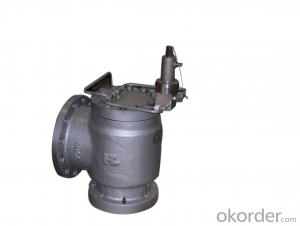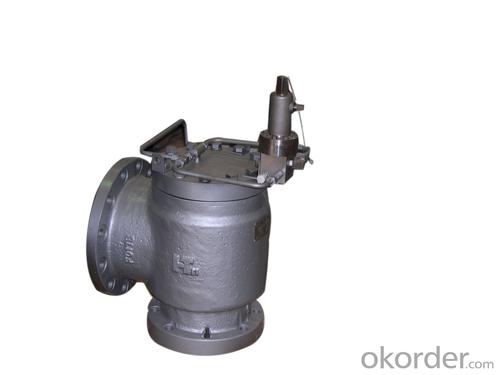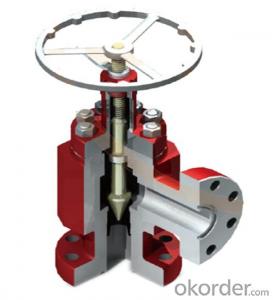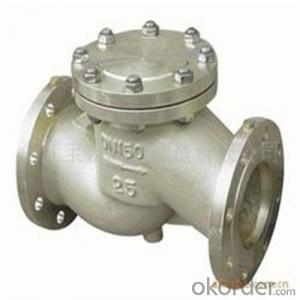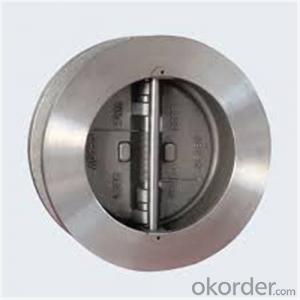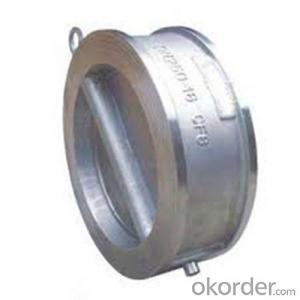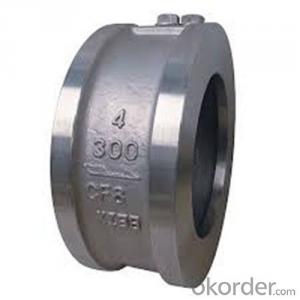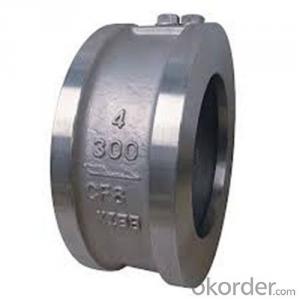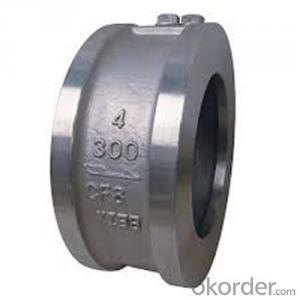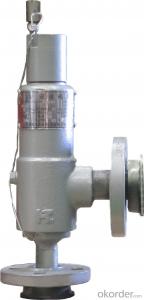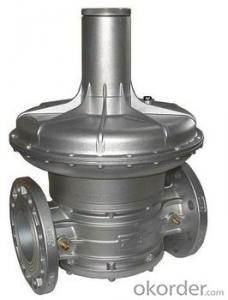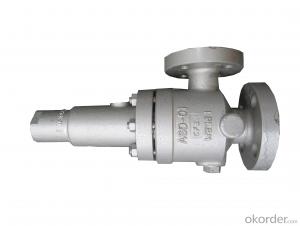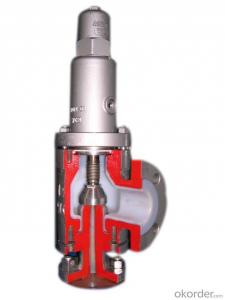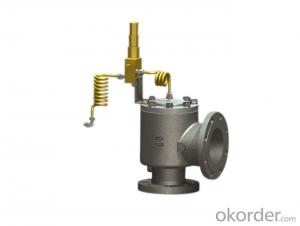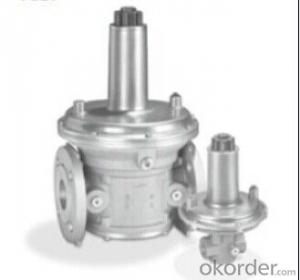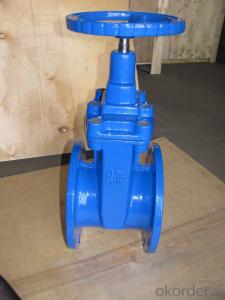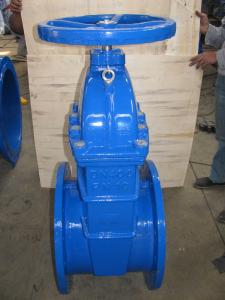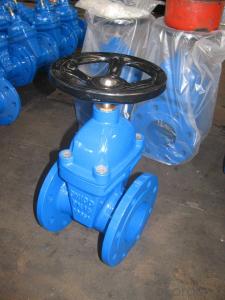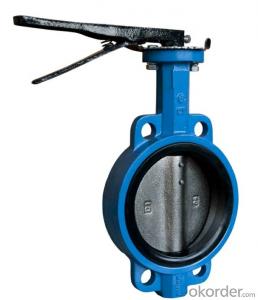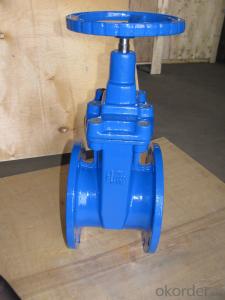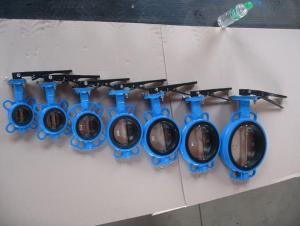High Performance Pressure Reducing Valve
- Loading Port:
- China Main Port
- Payment Terms:
- TT OR LC
- Min Order Qty:
- -
- Supply Capability:
- -
OKorder Service Pledge
OKorder Financial Service
You Might Also Like
Application:
A pressure relief valve (PRV) is a safety device that relieves overpressure in a vessel or system. When the pressure of vessel or system increased beyond the specified design pressure or maximum allowable working pressure, PRV will be opened automaticly to relief the overpressure for proteding the vessel or system. The PRV will be closed if the pressure reached specified design pressure so that to ensure the normal operation and protect the vessel or system.
Our Pressure Relief Valve has been designed and manuractured according to following Standard:
♦ ISO 4123-1 Safety Devices for Portection Against Excessve Pressure
♦ API STD 526 Flanged Steel Pressure Relief Valves
♦ API STD 527 Seat Tightness of Pressure Relief Valves
♦ ASME Boiler and Pressure Vessel Code Section VIII Division 1, Rules for Construction of Pressure Vessels
Peformance:
♦ Type: Conventional, Bellows
♦ Size:1" D 2"- 8" T 10"
♦ Class:150lb~2500lb
♦ Temperature:-268~+538°C
♦ Fluid: Gas, Steam, and Liquid
♦ Material: Carbon steel, Stainless steel, Alloy steel
♦ The allowable tolerance of the set pressure: ≤±3%
♦ Overpressure: ≤10%(gas)/≤20%(liquid)
♦ Blowdown: ≤10%(gas)/≤20%(liquid)
♦ Tightness: conforms to API STD 527
Features:
♦The solid nozzle is screwed into the body, which makes the maintenance easy.
♦ The shape of the disc holder has been designed to enhance the effect of the fluid thrust for an instant lift of the disc.
♦ Blowdown control is provided with adjustable nuzzle ring only.
♦ The adequate terials and clearance between disc holder and guide , spindle and adjusting screw assures disc to lift successfully.
♦ The surface of both the disc and the nozzle seat are deposited with Stellite. Excellent flatness and surface finish of the seating surfaces by precision machining and lapping assure pressure relief valve to have high degree of seat tightness and long using life.
♦ The bellows of balanced bellows pressure relief valves can not only avoid and effect of variable back pressure in the system , but also protect spring and other trim components from corrosive media.
♦ Materials are chosen carefully , and the manufacture of the spring and the bellows has strict technological process. Each of them is tested and checked strictly.
- Q: I am being sent for a level 2 Ultrasound Thursday because my previous US showed one of the babies valves was enlarged. She said all 4 chambers were there but she was very vague on what this means. Care to shed some light?
- I don't know what this means in a fetus at 20 weeks since a lot of changes still lie ahead, but you can glean some info from the nature of this type of defect in adults. If the abnormality doesn't change and if no other abnormalities arise, the flaps of the affected valve will poke into one of the heart chambers. This situation is called valve prolapse. Look up mitral valve prolapse as an example. Typically a valve prolapse is not a serious defect, but if the prolapse is severe it might require treatment at some point in life or maybe even multiple treatments. What the heart will look like at birth is probably the bigger question. Some abnormalities signal a genetic defect that might cause other problems as well. Some defects cause a chain of problems in later steps of development. Your doc should have a good idea if any of these concerns exist. Maybe genetic testing will be suggested, but many defects occur with no explanation and they do not cause other complications. I would guess that after the chambers are developed, a dilated valve would be unlikely to cause any significant complications in later heart development, but this is just a guess.
- Q: IT USUALLY TAKES 2 SECONDS TO START THE MOTOR. NOW, IT TAKES OVER 40 SECONDS AT 7 AM. IT ALMOST KILL THE BATTERY. IF YOU PARK FOR 1 HOUR, 2ND START TAKES 10 SECONDS. IS THIS HAPPENING BECAUSE THE VALVES NEEDS ADJUSTING? HOW AND WHAT IS THE EASY WAY OF VALVES TUNE-UP?
- Good call, it most likely is the valve clearance. As the valves wear, they get tighter until they actually stay open a bit (when cold). As the engine warms up, the aluminum head pushes the cam away from the valve stems a bit, and some clearance comes back. Check 'em, adjust 'em, and you should be good to go. For most chinese 150's, you'll need to remove the plastic around the engine, then pull off the valve cover - you'll see the rocker arms inside, with locking nuts and adjustment screws. Set the crank at TDC on the compression stroke (about 1/2 turn after the intake valve closes) and then adjust the clearance - get specs from your manual, or just make sure that there's at least 0.1 mm gap if you don't have the specs.
- Q: used in pipe line
- Bellows Relief Valve
- Q: this valve uses in fire water lines...
- The question is not clear. What exactly do you want to know? There is lots of info online
- Q: does that mean it doesnt work?, how can i tell if the egr valve works still?
- Not sure how to answer. First the vacuum line going to your egr only has vacuum under certain conditions and never at idle. If you have an egr code/problem.... email me with code/syptom and vehicle info i'll try to help further. :)
- Q: I have a 99 Yamaha Warrior 350 and i am needing to take it and get the valves adjusted. I know prices will range from state to state but what would be the average price to take and get them adjusted?? Just the valves not including if they had to change the seals or anything.. Thanks(PS im a girl so put it in simple words!)
- The link below shows what the valves are. The adjustment to them requires loosening #13, and then turning #12 such that the valves #1 2 are within the proper specification. To do this requires disassembly, then measurement and adjustment, and finally reassembly. This can range from 1.5 to 3 hours depending on various reasons. So, estimate 3 x [Labor Rate], whereas [Labor Rate]s vary from shop to shop, and I've seen from $65 to $120.
- Q: i am hearing tapping on top under of vale cover sound like valve need adjusting
- time to change oil, use thicker oil or yep, adjust valves. not a monstrous project but time consuming. Need torque wrench, valve cover gasket and shim kit to adjust. It's a pain as u have two nuts on each valve adjustment rocker bolt. tightening causes the lower one to drop sometimes so u may find yourself adjusting the valves 2-3 times each. I did it on my old Acura with 78K miles. ran smoother. i dropped in a pulley kit and cold intake as well but afterwards. the head was real clean as I change oil regularly. I had tapping even after changing the knock valve so I knew the valve job was needed.
- Q: like they say on 4 strokes you gotta go get valve jobs, and they cost bout 300 they say? well what does the mechanic do? can it be done at home and your just adjusting them?
- A okorder /
- Q: why do new motorcycles need to get their valves shimed alot? can someone explain how the whole valve adjusting thing works? why do some engine types require more attention? i have owned thumpers my whole life and never really thought about it. i was looking at this like cheap beater bike (hyosung gt250 v twin) and i read the valves need to be checked like 3 times in a short span, wtf??
- Your prospective Hyosung may require some more frequent adjustments because the initial wear on its machined surfaces would still be polishing each other off.... surfaces like your hardened valve seats against the sealing surfaces of the valves... Or, the hardened surfaces of the cam lobes against the rocker arms. If your Hyosung's engine has been properly engineered, then its components have been properly case hardened. After their initial microscopic machined imperfections have been polished smooth, they shouldn't have to be checked as often. The Hyosung 250 was designed in Hamamatsu Japan by the same people who design Suzukis. It should turn out to be a great motorcycle. Perhaps frequent valve checks are because it's high revving and air cooled.?.? I owned an air cooled KZ550 Kawasaki, once. It required valve checks every 3000 miles. On the other hand, my wife has a 2007 Corolla. It has a low revving, Double Over Head Cam, 4 valve per cylinder LIQUID cooled engine. It requires valve adjustments every 60,000 miles.
- Q: anyone know .. if the 5.7L Hemi 2003 has a egr valve?
- The EGR valve and electronic solenoid on most 2004 and newer Chrysler 5.7L Hemi engines is mounted on the 'front end' of the driver side head close to where the intake manifold bolts to the head and a tube is routed from the EGR valve to the intake manifold, although on some Chrysler models with the 5.7L Hemi engine it is mounted on the 'front end' of the passenger side head. To replace it remove the electrical connector from EGR solenoid, remove the 2 bolts from the exhaust gas routing tube flange which is connected to the EGR valve, and remove the 2 mounting bolds which connects the EGR valve to the head. Be sure to replace both gaskets when replacing the EGR valve, the routing tube flange gasket and the EGR mounting gasket.
Send your message to us
High Performance Pressure Reducing Valve
- Loading Port:
- China Main Port
- Payment Terms:
- TT OR LC
- Min Order Qty:
- -
- Supply Capability:
- -
OKorder Service Pledge
OKorder Financial Service
Similar products
Hot products
Hot Searches
Related keywords
